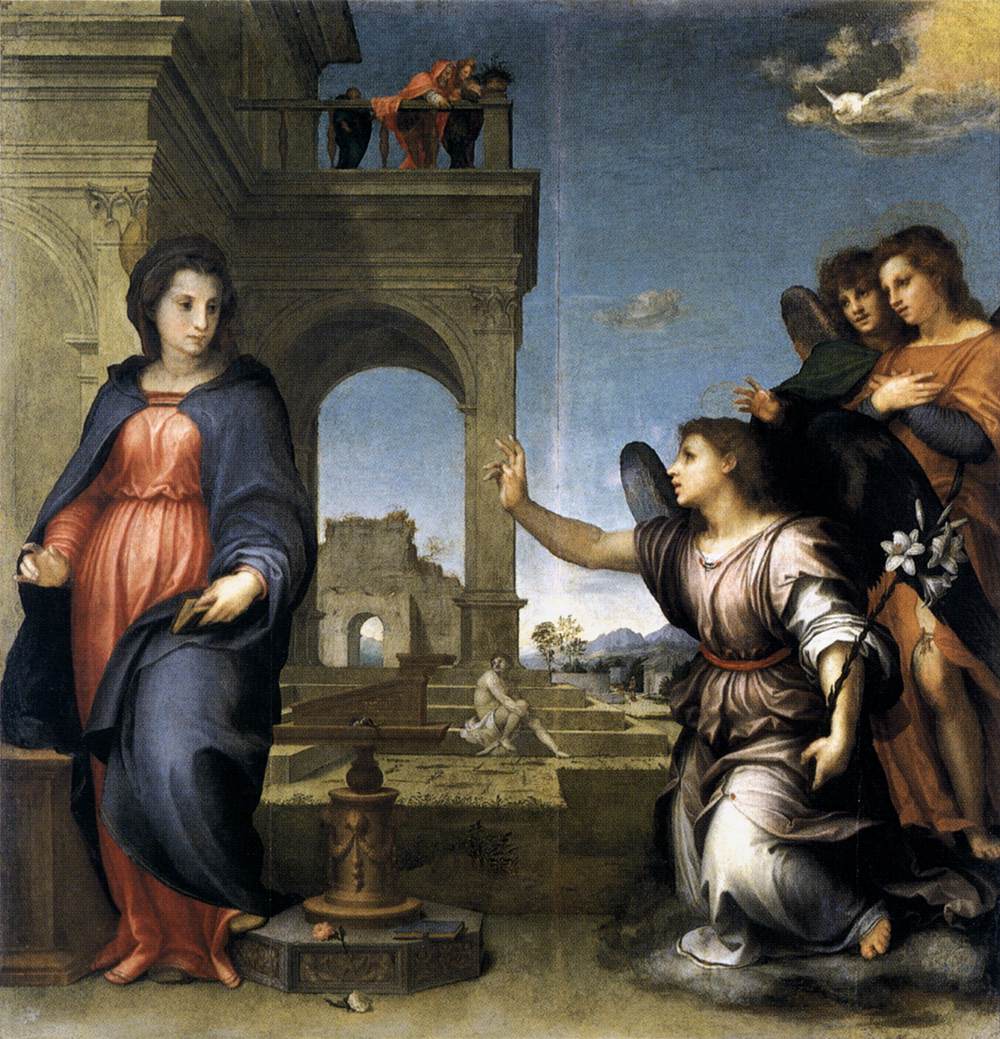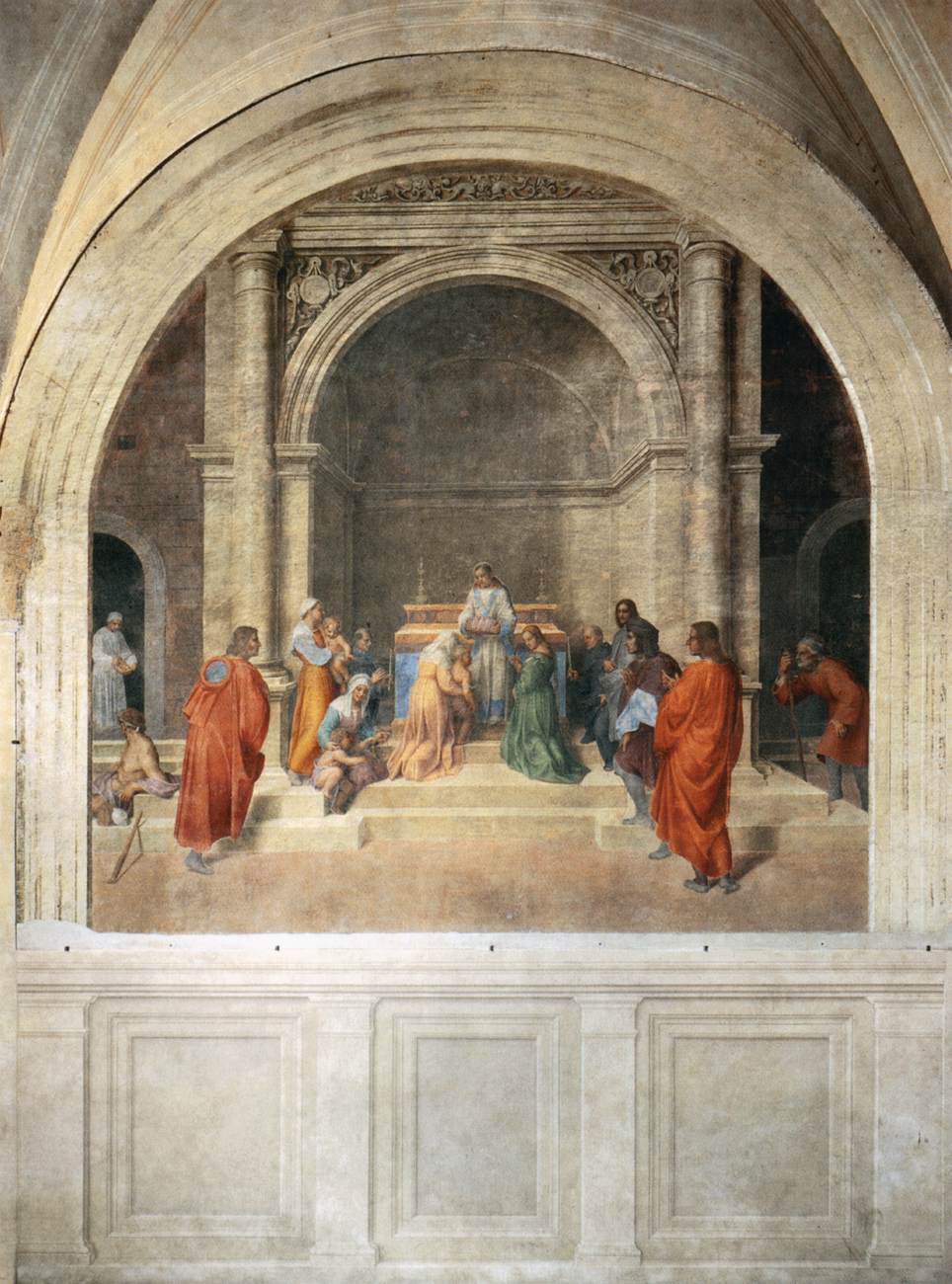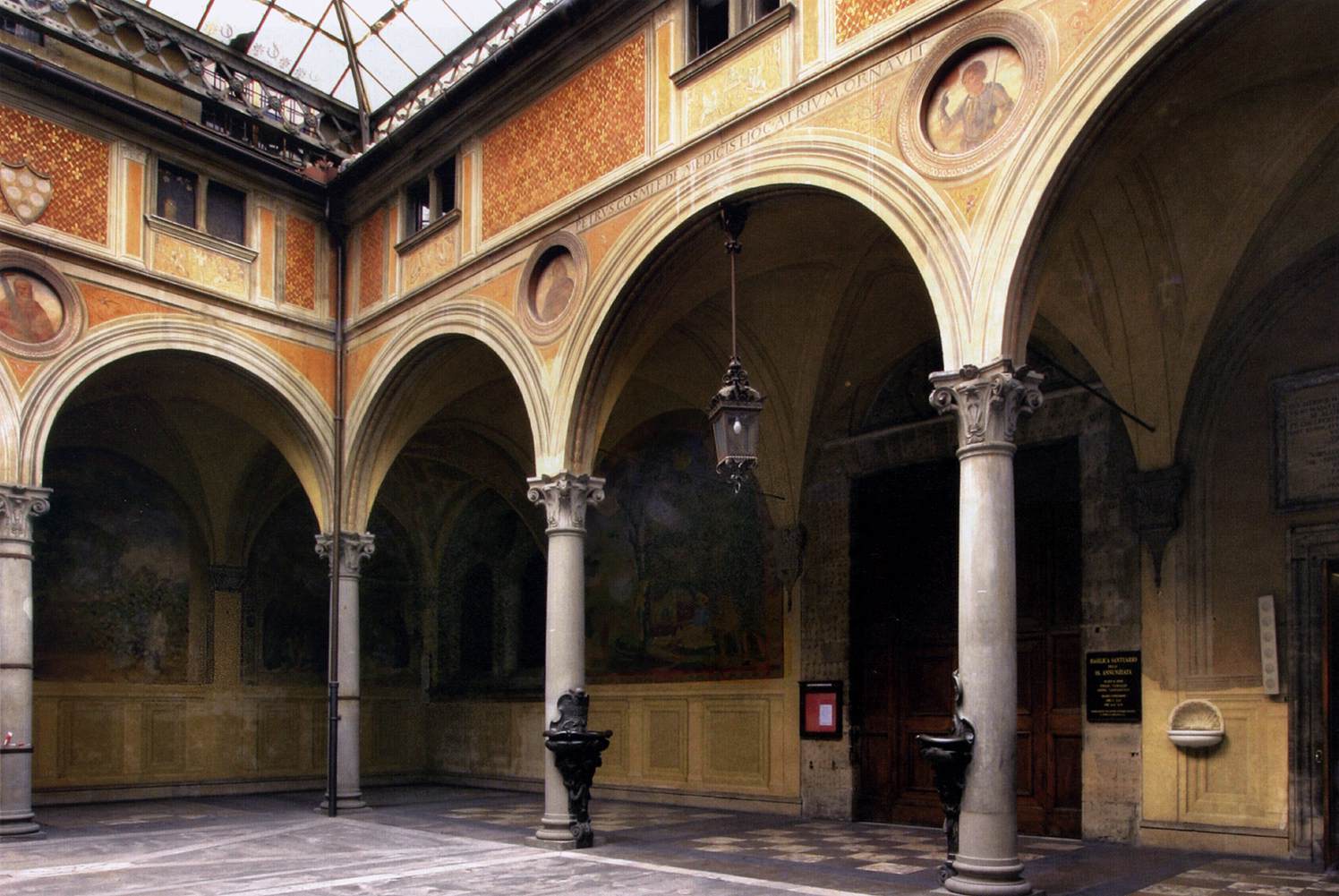Italian painter, nicknamed Andrea "of the tailor" after his father's occupation. His real name was Andrea d'Agnolo di Francesco. He is, alongside Fra Bartolommeo, the supreme exponent of Florentine early High Renaissance style and the counterpart of Michelangelo and Raphael, active in Rome. He was the best painter (as opposed to draughtsman) in 16th-century Florence, and had more feeling for tone and colour than any of his contemporaries south of Venice. He was the first Florentine to depart from the coloured-drawing approach in favour of composition by coloured patches of light and shade, although his actual draughtsmanship is derived from Michelangelo. He also borrowed from the newly-arrived prints by Dürer. Except for a visit to Rome around 1511, where his style gained greater monumentality, and a year-long stay in France in 1518, where he completed a few works at the invitation of François I, he spent most of his life in Florence.
As a fresco painter he made his name with a series of grisailles in the cloister of the Scalzi in Florence, depicting the story of the Baptist (1511-26), and the Miracles of San Filippo Benizzi (1509-10) in SS. Annunziata. These were followed by his most famous frescoes, epitomizing the High Renaissance style in Florence, the Birth of the Virgin (1514) and the Madonna del Sacco (1525), both also in the Annunziata.
In 1517 or 1518 he married a wealthy widow who had modeled for him for several years, both for portraits and for Madonnas. He went to France in 1518/19 at the invitation of François I and was well received there, but he broke his contract in order to return to his wife, who, in the opinion of contemporaries, ruined him.
Andrea's works are of great importance in the evolution of Florentine painting, especially the Holy Families, often in half-length. His Madonnas are notable for their softly atmospheric qualities and the richness of their colour, in contrast to the linear definition and clear, bright hues of artists like Botticelli and Ghirlandaio. The Madonna delle Arpie (1517, Florence, Uffizi), is a purely classical work comparable with Raphael's Madonnas. Sarto is, however, a starting point for Mannerism, since his pupils included Pontormo, Rosso Fiorentino, and Vasari,. Andrea's process of making a series of preparatory drawings before painting demonstrated his patient pursuit of perfection and became a pattern for later artists. He was an excellent draughtsman, the best collection of his drawings is in the Uffizi.
//
![]()









